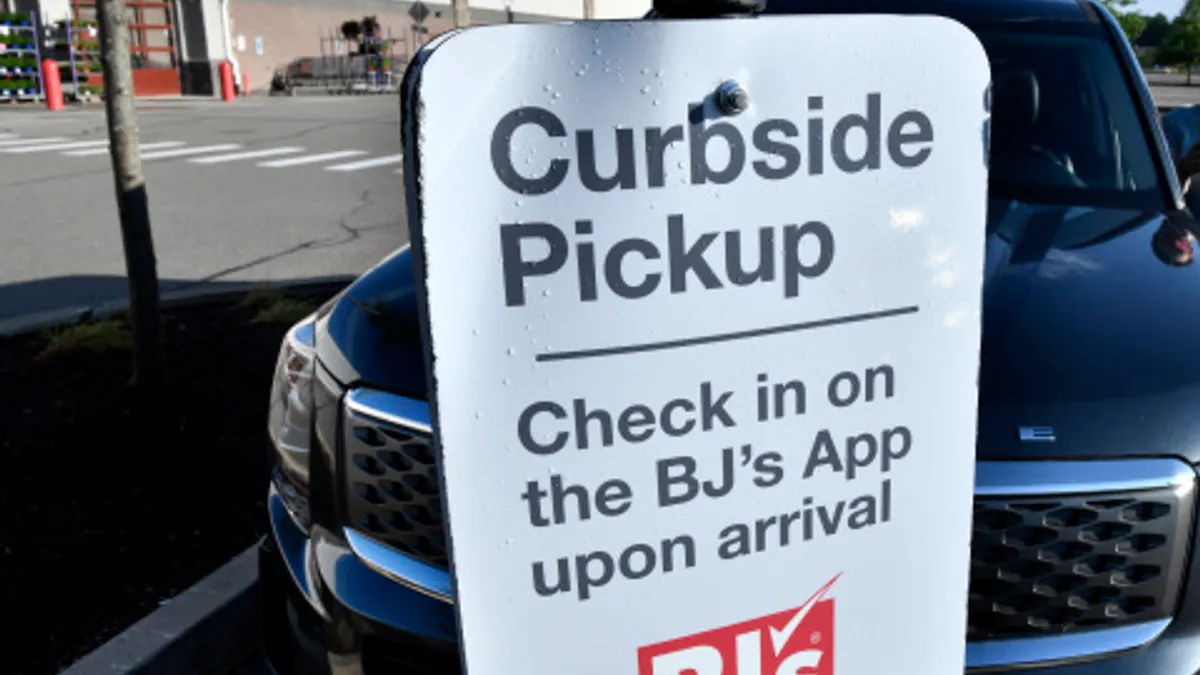Dive Brief:
- In yet another trend accelerated by the pandemic, buy online, pickup in store services have surged, with 40% of retailers now offering the service, compared to just a quarter last year, according to an emailed report from omnichannel platform NewStore. More than half (55%) offer in-store returns of online purchases, the firm found.
- Thanks in part to the expansion of Google My Business, smaller retailers are increasingly offering such services, with about 40% of online purchases picked up at local stores, according to omnichannel firm Uberall.
- Growth in such services has spiked 75% YoY, with BOPIS growth at Walmart and Target outpacing their robust online sales growth, according to 1010data. The trend is fueled in part by concerns about timely holiday fulfillment on the part of just over half of U.S. consumers, according to marketplace platform Feedvisor.
Dive Insight:
During May, a period when most stores were closed, online sales skyrocketed nearly 93%. But even over the Black Friday weekend when most stores were open, e-commerce was on its way to surpass 40% growth over 2019.
More than 80% of consumers told FTI Consulting that they're going to shop more online this year compared to last, leading the firm to predict the trend "will stick once the pandemic passes." But many of those customers will be going to their stores — including their small, local retailers — to pick up those online purchases (or return them).
That reflects a rare vulnerability for Amazon, which has scrambled to make up for its dearth of physical locations through the creation of fulfillment hubs and return stations at Kohl's stores. Including its Whole Foods chain, Amazon runs 578 stores. Compare that to more than 4,700 U.S. Walmart locations and almost 1,900 Target locations.
Walmart said that 90% of the U.S. population lives near one of its stores, and it offers e-commerce fulfillment through 2,800 of them. That makes the retail giant attractive not only to shoppers but also to marketplace sellers.
Such third-party businesses — which Amazon has long boasted sell 60% of the goods sold through its site — share consumers' concerns about timely fulfillment and delivery of orders, according to Feedvisor. Amazon has not been immune to the supply chain snafus that have abated only somewhat since the early months of the pandemic.
Some 40% of brands that sell on Amazon also sell through Walmart's marketplace, and that could grow as more consumers opt for Walmart even when buying online, according to Feedvisor President and COO Dani Nadel.
"The pandemic has further strengthened Walmart's position in e-commerce, and its massive store footprint has been a driving factor," she said by email. "Given the ongoing effects of the pandemic, consumers are increasingly shopping digitally from a store they have traditionally shopped at physically, and 51% said they plan to shop on Walmart.com this holiday season. In-store or curbside pickup, which Amazon cannot offer, is an added convenience and incentive for new digital shoppers to customize their online experience in a way that best suits their needs."
















